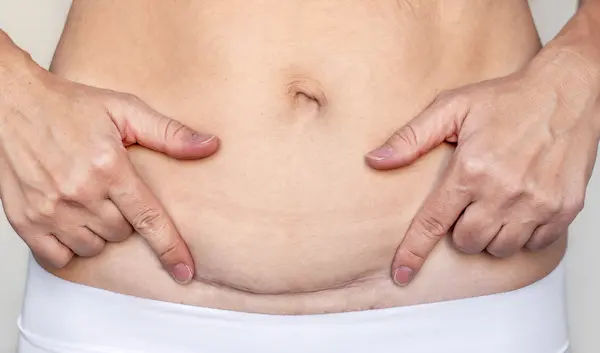How to Reduce Inner Thigh Fat?
Losing inner thigh fat requires a combination of healthy eating, effective exercises, and lifestyle changes. Discover simple strategies to tone the thighs in this article.

Written by
Last updated on 3rd Jul, 2025
Toning the inner thighs has always been a challenge, as it is an area where fat is easily stored. Combining healthy eating habits with suitable exercises and lifestyle changes can make it easier to reduce body size while improving self-esteem.
This article discusses how to eliminate excess fat from the inner thighs and achieve strong legs.
Understanding Inner Thigh Fat
Fat storage often results from genetics and poor dietary habits. Fat accumulation can also be the result of a lack of physical activity. Learning to listen to the body becomes increasingly important so that potential problems can be caught early before they develop into more serious issues.
Knowing one’s body type makes a crucial difference in improving one’s overall health. Recognizing the onset of abnormal changes in the body leads to better self-care strategies and helps to make informed decisions.
Effective Exercises to Target Inner Thighs
Here are some of the exercises that target inner thigh fat reduction along with their steps:
Sumo Squat
Feet are positioned wide apart, with toes angled outward at 10:00 and 2:00 positions.
A dumbbell can be used for added resistance.
The chest remains upright while bending the knees, ensuring alignment with the toes.
Upon standing, the abs, glutes, and inner thighs engage.
Performed in 2 sets of 12–15 repetitions.
Step Lunge
The exercise begins in a standing position with feet together, holding a dumbbell at chest level.
A step forward with the right leg initiates the movement, with hips pushed back as the knee bends.
The knee remains aligned between the second and third toe and does not extend beyond two inches past the toes.
The right leg pushes off the ground to return to the initial position.
The movement is then repeated on the left leg to complete one full repetition.
Performed in 2 sets of 12–15 repetitions.
Curtsy Lunge
The starting position is with feet together.
The right leg steps behind the left while both knees bend, engaging the inner thighs.
Upon rising, the right foot can either tap down or lift for added intensity and balance.
The movement is repeated on the right side for 10–12 repetitions.
The same steps are performed on the left side, followed by an additional set for each side.
Some of the inner thigh specific workouts to follow are:
Skater
Begin with feet together, knees slightly bent, and core engaged.
Push off with the right leg, hopping to the left while momentarily leaving the ground.
Land on the left leg, crossing the right leg slightly behind in a small curtsy lunge with a forward hip hinge.
Hop back to the right side to complete one full repetition.
The movement can be performed at a faster pace for a cardio effect or slower to emphasize range of motion.
Side-Lying Adduction
Lie on one side with the top leg bent and positioned forward, supported by a yoga block or pillow if needed.
Extend the bottom leg straight while keeping hips stacked.
Lift and lower the bottom leg while engaging the abdominals.
Complete 15–20 repetitions, then switch sides.
Perform a total of 2 sets per side.
Dietary Considerations to Reduce Inner Thigh Fat
A healthy diet with fruits, vegetables, whole grains, and protein from lean meats, beans, nuts, and eggs supports fat loss. High-fiber foods aid digestion and keep you fuller for longer. Many people choose low-carb diets to reduce fat. The National Institutes of Health (NIH) recommends the intake of:
A variety of fruits and vegetables
Whole grains
Protein from various sources, like nuts, seeds, beans, lean meats, and eggs.
Limiting certain foods helps prevent excess fat storage. It is recommended to reduce the intake of:
Carbohydrates
Sugars
Salt
Red meat
Lifestyle Modifications for Inner Thigh Fat Reduction
Losing thigh fat requires steady effort rather than short-term dieting or exercise. Some of these are:
Healthy eating and regular workouts lead to lasting results.
Patience and persistence are of paramount importance when it comes to losing thigh fat. Viewing fitness as a long-term lifestyle change helps maintain progress.
Moving every day helps burn calories and keeps fat from building up.
Additional benefits are improved blood flow, enhanced muscle tone, as well as stronger thigh muscles, and an elevated metabolism.
Prolonged leg fat reduction can be supported through simple exercises such as cycling, walking, and squatting.
Role of Hydration to Lose Inner Thigh Fat
Drinking water boosts metabolism, controls appetite, and helps burn fat. Water fills the stomach, reducing hunger. Cold water may slightly increase calorie burning as the body works to warm it up.
Age, sex, and level of daily activities are just a few among the many factors that determine the amount of water a person should consume. Although it is acceptable for people to only drink when they are thirsty, it is better to develop a routine. It is recommended that people drink at least eight ounces of water during each meal.
The table below states the average cups of water males and females require per day:
Mental Health and Body Image Related to Inner Thigh Fat
A person’s perception of their body is referred to as body image (BI). It can be positive, negative, or neutral. In this context, negative BI refers to one’s dissatisfaction with how they look. BI influences one’s mental health, self confidence, and even one’s day to day activities.
Research conducted by Drs. Niva Piran and Tracy Tylka show how self-care and mindfulness reduce societal pressure. Their case studies provide a compelling comparison between individuals who embrace body acceptance and those who struggle with body dissatisfaction. Yoga helps build a better connection with the body.
Professional Interventions for Inner Thigh Fat Reduction
Medical or surgical treatments may help when diet and exercise don’t reduce stubborn leg fat. These treatments are an option when lifestyle changes don’t show results. A doctor can suggest the best treatment based on health and personal goals.
Some of the non-surgical options include:
Laser Therapy – Breaks down fat cells using light energy.
Cryolipolysis (Fat Freezing) – Freezes and eliminates fat cells over time.
Technology and Gadgets to Reduce Inner Thigh Fat
Fitness apps and wearables track physical activity, calorie intake, and personal progress. Personalized workout plans can be designed to target the lower body effectively. Step counters and smart scales help monitor fat loss progress.
Additionally, virtual groups offer workout guidance, dietary tips, and motivation. Online forums provide access to expert advice and success stories. Social media fitness influencers share valuable exercises and nutrition strategies.
Common Misunderstandings Related to Inner Thigh Fat
Spot reduction is a myth and does not work. Thigh fat loss happens through overall body fat reduction. Strength training builds muscle, but fat loss depends on calorie burning through diet and exercise. Metabolism also plays a role in fat storage and loss.
Genetics influence where fat is stored, but lifestyle choices determine how much fat is lost. A nutritious diet and regular exercise help overcome genetic predispositions. Sustainable habits work better than short-term crash diets.
Conclusion
By integrating cardio with strength training, results can be achieved most efficiently. Toning of the thighs is done through weights and resistance, whereas running or cycling is helpful in fat loss. Muscle growth is also achieved and sustained through a balanced diet. Along with this, hydration helps the process by improving metabolism in the body.
Health benefits take time to notice, and while forming new habits can be difficult, the payoff is priceless. Long-term modifications should be focused on instead of temporary quick fixes. Progress primarily boils down to eating healthy, exercising regularly, and being persistent. With the daily practice of small actions, significant transformations can be achieved.
Consult Top Dietician
Consult Top Dietician

Ms. Sushma Jaiswal
Dietician
42 Years • M.Sc.(Food & Nutrition)
Bengaluru
Swasthya Nutrition, Bengaluru

Neelanjana J
clinical nutrition
3 Years • Bsc., Msc. Nutrition and Dietetics.
Bengaluru
Apollo Clinic, JP nagar, Bengaluru

G. Divya
Dietician
5 Years • MSC. in Dietetics and Applied Nutrition
Bengaluru
Apollo Clinic, Koramangala, Bengaluru

Ms. Sreeparna Dey Dhara Deb
Dietician
10 Years • DNHE
Bansdroni
Siddhita Healthcare., Bansdroni

Ms. Soma Saha
clinical nutrition
17 Years • B.Sc. - Home Science (Food & Nutrition), M.Sc. - Home Science (Food & Nutrition)
Kolkata
Dr Utsa Basu Clinic, Kolkata
(50+ Patients)

